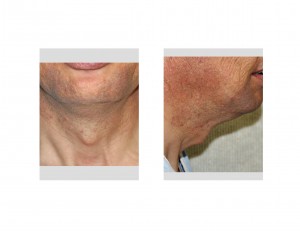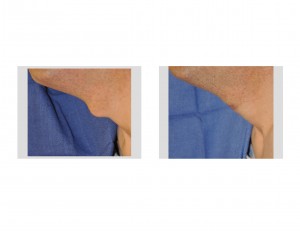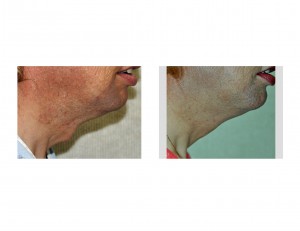Background:The central prominence of the neck is well recognized as the adam’s apple. It is largely a male feature although it can be prominent in some women as well. It is composed of paired cartilages which surround the larynx and is designed to protect the delicate voicebox from injuries. While often referred to as the thyroid cartilages, a more accurate name would be the larynx cartilages as that is what it actually guards.
The name adam’s apple is often believed to be a reference to the observation that it looks like a chunk of apple stuck in the throat, relating to the biblical story of Adam and the fruit from the Tree of Knowledge. More likely, however, it is the result of a mistranslation of the Hebrew words, tappuach ha adam, which means ‘male bump’.
Those patients who seek adam’s apple reduction generally fall into two categories, transgender conversion from male to female and males who simply desire less of a central neck prominence. It is widely believed that most tracheal reductions are done in the transgender patient but this has not been my experience. I find it to be about a 50:50 ratio. The aesthetic neck goals for each group are slightly different. The transgender patient would prefer a completely flat neck profile which is more feminizing. The male patient can live with some reduction and a visible remaining small neck bump is still acceptable.



Thyroid cartilage reduction is a simple but effective neck contouring procedure. While it is important to reduce the cartilage prominence as much as possible, it is critical to not destabilize the thyroid cartilage to avoid the risk of voice change due to alteration of the tension on the vocal cords. There is no exact way to know how much cartilage can be safely removed before this occurs so when in doubt, conservative reduction is best.
Case Highlights:
1) Tracheal shaves are done through a small horizontal neck incision with minimal recovery and discomfort.
2) Complete elimination of the thyroid cartilage profile is not always possible. The limiting factor is the thickness of the cartilage and the location of the vocal cords internally.
3) Adam apple reduction is largely done by cartilage shaving but more firm areas of cartilage may require mechanical burring reduction.
Dr. Barry Eppley
Indianapolis, Indiana



